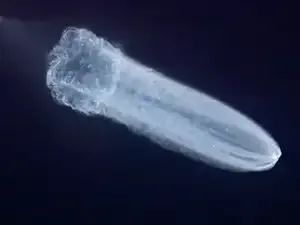On July 16, 2025, China launched its Tianzhou-9 cargo spacecraft aboard a Long March-7 Y10 rocket, leaving behind a mesmerizing, jellyfish-like cloud in the sky that quickly went viral on social media.
The Tianzhou-9 successfully docked with the Tiangong space station just over three hours after liftoff, delivering up to 7.2 tonnes of supplies—including food, oxygen, scientific instruments, and cutting-edge equipment. The China Manned Space Agency (CMSA) confirmed that the cargo ship completed its docking at 8:52 a.m., following a rapid autonomous rendezvous with the station’s Tianhe core module.
This mission is the fourth resupply operation since Tiangong entered its application and development phase, underscoring China’s growing capability in maintaining a self-sufficient orbital outpost.
What Did Tianzhou-9 Deliver?
In total, Tianzhou-9 carried over 1.5 tonnes of food, featuring 190 menu items—including more than 90 side dishes—to improve life aboard the station. It also delivered nearly 780 kilograms of scientific payloads, ranging from biomedical tools to long-term experiment kits.Among the crucial payloads were:
- Two upgraded EVA (spacewalk) suits with enhanced durability, capable of supporting up to 20 spacewalks over four years.
- A core-muscle training device to help astronauts combat muscle atrophy during long stays in microgravity.
- A brain organoid-on-a-chip experiment, designed to study human brain cell behavior and the blood-brain barrier in space.
- Nanocarrier drug delivery systems, materials science experiments, and equipment for aerospace medical research.
Why This Mission Matters
As the International Space Station (ISS) approaches retirement in 2030, China’s Tiangong is rapidly emerging as the next-generation orbital lab. Built with three modules—Tianhe, Wentian, and Mengtian—it is already conducting a wide range of scientific, medical, and technological research.China’s space program has advanced significantly despite being excluded from ISS cooperation due to U.S. restrictions. The nation’s consistent success in spacecraft docking, human habitation, and autonomous operations is a testament to its goal of becoming a top-tier spacefaring power.








